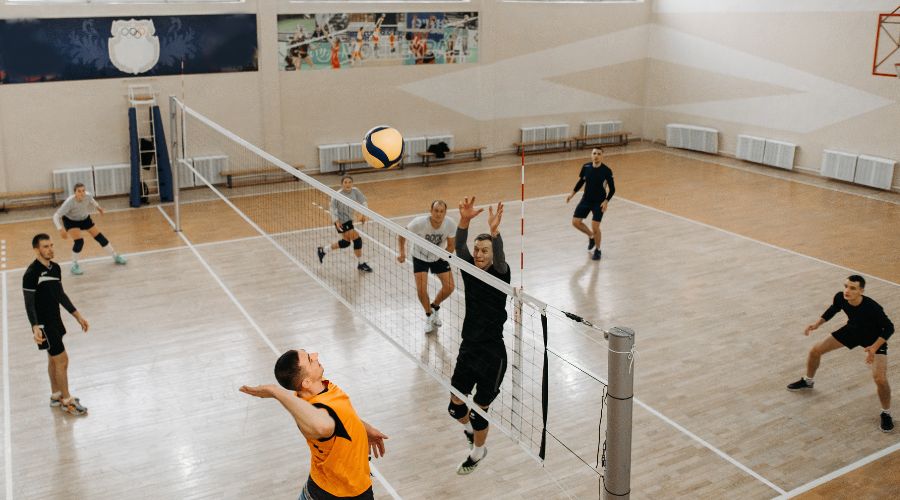When it comes to protecting athletes, spectators, and facilities, sports netting installation is no place to cut corners. Whether you're outfitting a baseball field, golf course, or multi-sport complex, having the right netting system can mean the difference between costly accidents and seamless safety.
At Nets Depot Ins, we’ve spent years perfecting the art of professional sports netting solutions. Today, we're revealing 12 insider secrets that will help you make safer, smarter decisions during your netting installation.
1. Choose the Right Netting Material
The type of material you choose determines how well your netting will stand up to impact, UV rays, and weather. Not all materials perform equally in every environment, so choosing the right one is key to long-term performance.
- Polyethylene – Ideal for outdoor use, UV resistant, and cost-effective.
- Nylon – High strength and stretch resistance; great for high-impact sports.
- Kevlar – Best for custom, high-tension netting applications.
2. Assess Sport-Specific Needs
Every sport has unique safety requirements. A one-size-fits-all netting solution often leads to underperformance or safety issues. Tailoring your setup to the sport ensures optimal protection.
- Baseball/Softball – Requires fine mesh and strong netting.
- Golf – Needs tall, wide-span netting with excellent visibility.
- Soccer/Football – Can use larger mesh but still needs secure containment.
3. Know the Local Safety Regulations
Compliance with safety codes and local ordinances protects your organization from liability. Meeting industry standards ensures that your netting system is safe, legal, and insurable.
- Follow OSHA and ASTM standards for sports netting.
- Understand zoning and construction laws in your area.
- Ensure your setup aligns with insurance requirements.
4. Conduct a Thorough Site Survey
A detailed site assessment helps identify challenges before installation begins. From terrain to wind exposure, every factor should be measured to avoid surprises and ensure a perfect fit.
- Evaluate terrain slope and soil stability.
- Measure wind load and exposure risks.
- Identify obstacles like buildings or trees.
5. Use the Right Support Structures
Strong netting needs equally strong support. The type and placement of poles and anchors impact both safety and durability over time.
- Use galvanized steel poles for strength and rust resistance.
- Ensure deep concrete footings for stability.
- Implement high-tension cables or turnbuckles to keep nets taut.
6. Plan for Seasonal Adjustments
If your sports facility is used year-round or seasonally, flexibility is key. Planning for removability or adjustability will extend your netting’s lifespan and make seasonal transitions smoother.
- Install retractable netting systems for off-season storage.
- Use quick-release hardware for easy disassembly.
- Protect nets during harsh seasons to reduce wear and tear.
7. Prioritize Visibility and Aesthetics
Sports netting should blend into its environment while still offering safety. Proper planning ensures that your nets protect without blocking views or ruining aesthetics.
- Choose black netting for minimal visibility.
- Select the right mesh size for clarity and containment.
- Maintain clean sightlines for spectators and players.
8. Factor in Wind and Weather Conditions
Your netting must be ready to endure local weather patterns. Wind and rain can cause tension issues, sagging, or premature deterioration if not accounted for.
- Opt for UV and weather-resistant materials.
- Use corrosion-proof hardware in wet or coastal areas.
- Design with wind load calculations in mind.
9. Use Professional Installation Teams
Cutting corners with DIY installations can result in misaligned netting, poor tension, and serious safety hazards. Trusting experts ensures code compliance and peace of mind.
- Avoid common DIY mistakes like improper anchoring.
- Benefit from warrantied work and certified materials.
- Get faster, cleaner installations with professional tools.
10. Don’t Skimp on Maintenance Planning
Regular care keeps your netting functional and safe. A simple maintenance plan can help you detect issues early and extend the system’s lifespan significantly.
- Schedule bi-annual inspections.
- Perform routine cleaning to remove buildup and mold.
- Tighten or replace worn tension lines as needed.
11. Integrate Safety Padding and Signage
Even the best netting system needs visual and physical protection for high-traffic areas. Proper padding and signage show you care about user safety and reduce liability risks.
- Install foam padding around poles and anchor points.
- Use bright signage for netting boundaries and warnings.
- Display rules or guidelines to keep users informed.
12. Plan for Future Expansion
Design your sports netting system with future growth in mind. Facilities often expand, add new sports, or update regulations—being prepared saves time and money later.
- Use modular designs that can be scaled up.
- Leave space for additional poles or netting areas.
- Consider multi-sport layouts when planning your initial install.
Final Thoughts
Sports netting installation isn't just about hanging a net—it's about protecting people, preserving property, and preparing for the future. At Nets Depot Ins, we bring precision, expertise, and insight to every project, ensuring your facility is both safe and smartly equipped.
Contact Us
Ready to upgrade your facility with safe, reliable, and professional sports netting installation?
Nets Depot Ins is here to help. Whether you need a consultation, quote, or full-service install, we’ve got you covered.
Contact us now and let’s get your project off the ground the right way!





Comments